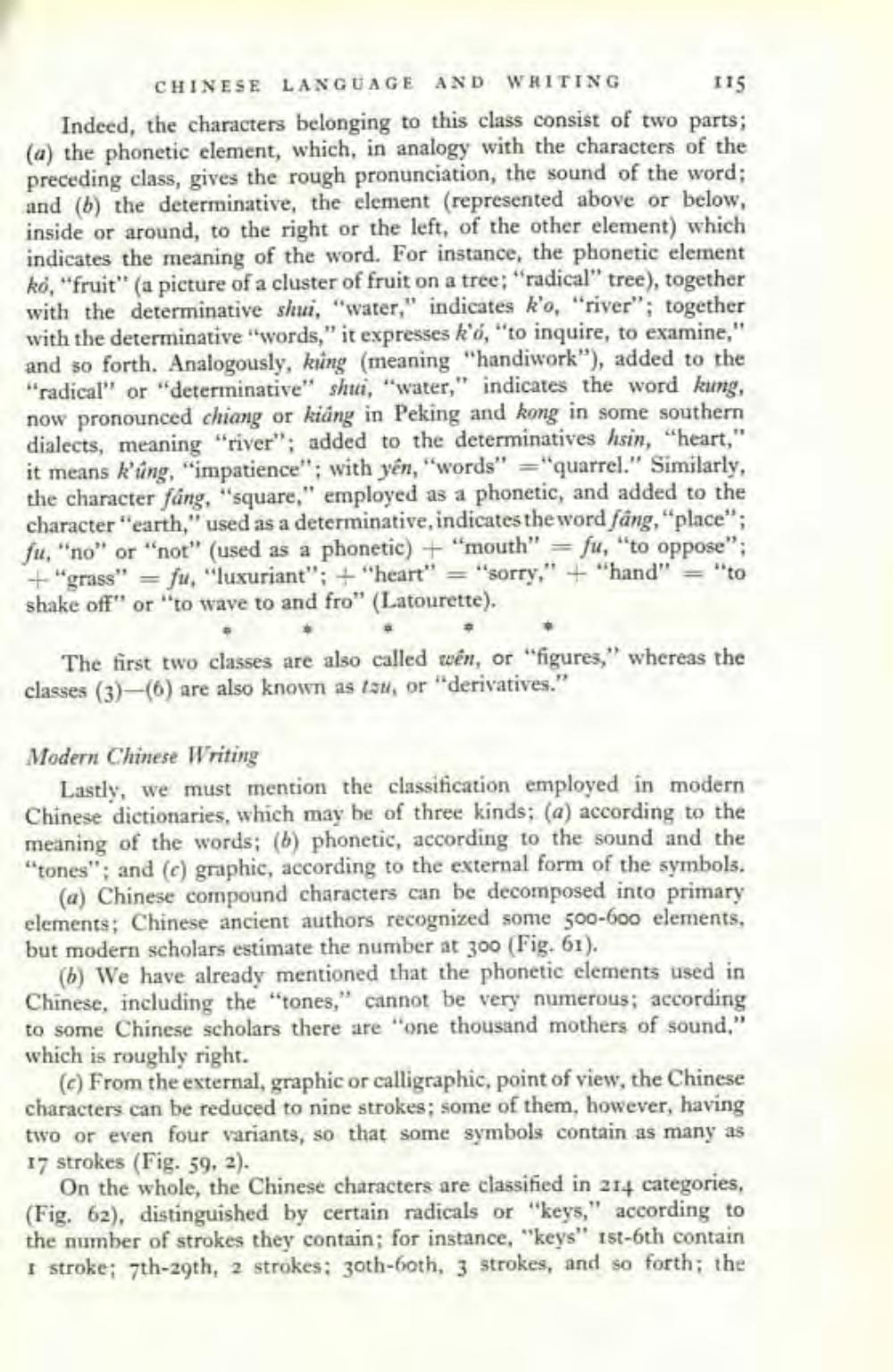________________
115
CHINESE LANGUAGE AND WRITING Indeed, the characters belonging to this class consist of two parts; (a) the phonetic element, which, in analogy with the characters of the preceding class, gives the rough pronunciation, the sound of the word; and (b) the determinative, the element represented above or below, inside or around, to the right or the left, of the other element) which indicates the meaning of the word. For instance, the phonetic element ko, "fruit" (a picture of a cluster of fruit on a tree; "radical tree), together with the determinative shui, "water," indicates ko, "river"; together
minative "words," it expresses kó, "to inquire, to examine and so forth. Analogously, kung (meaning "handiwork"), added to the "radical" or "determinative" shtu, "water," indicates the word kung, now pronounced chiang or kiáng in Peking and kong in some southern dialects, meaning "river": added to the determinatives hisin, "heart," it means Rúng, "impatience": with yên, "words" ="quarrel." Similarly, the character fäng, "square," employed as a phonetic, and added to the character "earth," used as a determinative, indicates the word fâng, "place"; fu, "no" or "not" (used as a phonetic) + "mouth" = fu, "to oppose";
+ "grass" = fu, "luxuriant": + "heart" = "sorry," + "hand" = "to shake off" or "to wave to and fro" (Latourette).
The first two classes are also called wên, or "figures," whereas the classes (3)-(6) are also known as tou, or "derivatives."
Modern Chinese Writing
Lastly, we must mention the classification employed in modern Chinese dictionaries, which may be of three kinds; (a) according to the meaning of the words; (b) phonetic, according to the sound and the "tones"; and (c) graphic, according to the external form of the symbols.
(a) Chinese compound characters can be decomposed into primary elements Chinese ancient authors recognized some 500-600 elements. but modern scholars estimate the number at 300 (Fig. 61).
(b) We have already mentioned that the phonetic elements used in Chinese, including the "tones," cannot be very numerous; according to some Chinese scholars there are "one thousand mothers of sound," which is roughly right.
(c) From the external, graphic or calligraphic, point of view, the Chinese characters can be reduced to nine strokes, some of them, however, having two or even four variants, so that some symbols contain as many as 17 strokes (Fig. 59, 2).
On the whole, the Chinese characters are classified in 214 categories, (Fig. 62), distinguished by certain radicals or "keys," according to the number of strokes they contain; for instance, "keys" 15t-6th contain I stroke; 7th-29th, 2 strokes: 3oth-both, 3 strokes, and so forth; the




